Portraits in RED: The ‘Silent Crisis’ Facing Indigenous Women
Native women are murdered at rates 10 times the national average.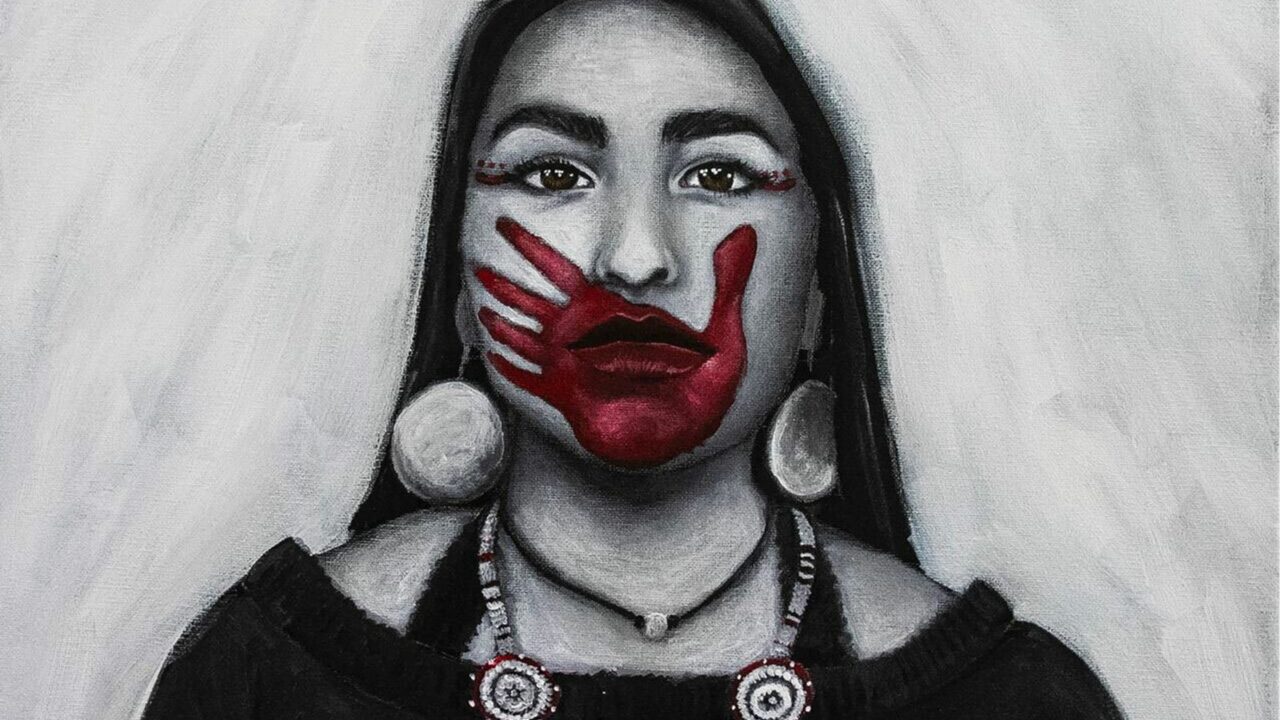 "Abigail in RED," a portrait by artist Nayana LaFond, mourns and reflects on the lack of coverage surrounding the crisis of missing and murdered Indigenous women. This portrait is featured in the "Portraits in RED" series on exhibit at the Southern Vermont Arts Center, in Manchester, Vt., through April 21.
(Acrylic Painting by Nayana Lafond)
"Abigail in RED," a portrait by artist Nayana LaFond, mourns and reflects on the lack of coverage surrounding the crisis of missing and murdered Indigenous women. This portrait is featured in the "Portraits in RED" series on exhibit at the Southern Vermont Arts Center, in Manchester, Vt., through April 21.
(Acrylic Painting by Nayana Lafond)
This article was originally published by In These Times.
Savanna LaFontaine-Greywind was eight months pregnant in August 2017 when neighbor Brooke Crews asked for help on a sewing project. Having been neighbors for a while, 22-year-old Savanna felt comfortable enough to enter Crews’ apartment. After she did, Savanna was shoved to the floor and knocked unconscious; Crews performed a C-section, stole the newborn baby and discarded Savanna’s body in the Red River, where it was found by kayakers eight days later.
The tragedy inspired the 2020 Savanna’s Act, signed into law to “improve the federal response to missing or murdered Indigenous persons.” Savanna was a member of the Spirit Lake Sioux, making her tragic end emblematic of a much larger, silent crisis.
According to a report by the Urban Indian Health Institute, cases of missing and murdered Indigenous women are grossly underreported for a number of reasons, including poor record-keeping protocols, institutional racism in the media and poor relationships between law enforcement agencies and Indigenous communities. The statistics we do have are sobering: One in three Native women will be sexually assaulted in her lifetime. Native women are murdered at rates 10 times the national average and have a lower life expectancy— according to Statista, the life expectancy of Native people in 2021 was 65.2 years, while the average life expectancy for the U.S. population overall was 76.1 years.
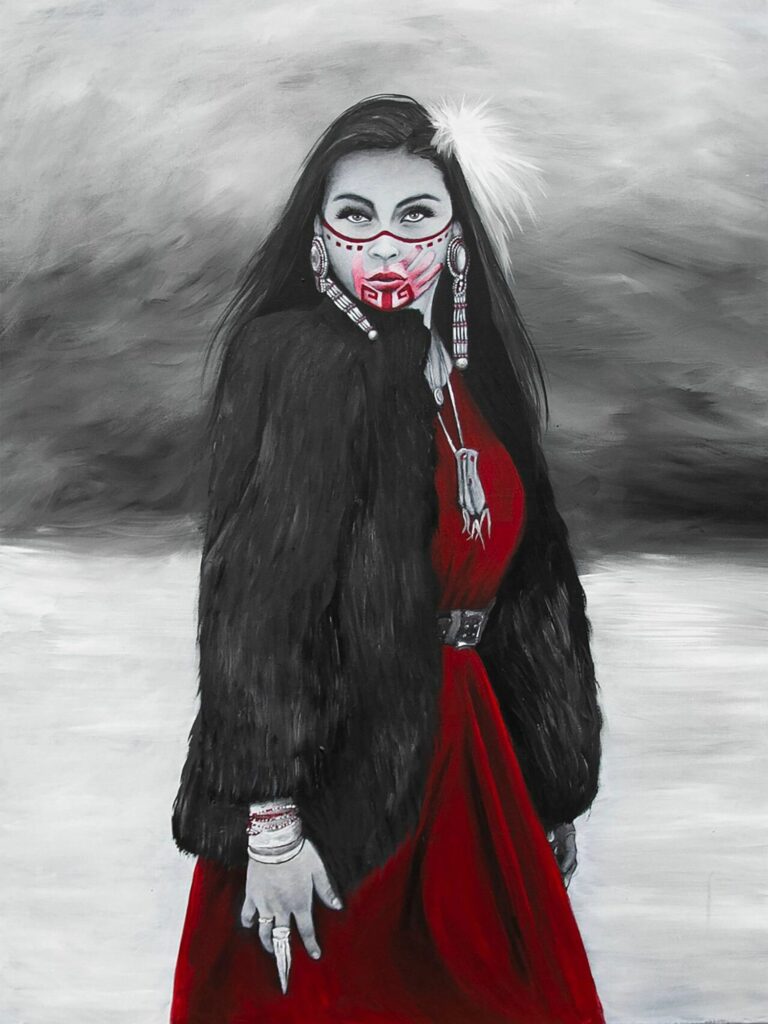
Many of the crimes committed against Native women are not reported, investigated or prosecuted, according to tribal officials — and that’s just for the information we do have, as it’s tricky to grasp the full extent of the problem. Native women are often demographically miscategorized, for example. One representative of the Fargo Police Department stated, “Sometimes the information [on a victim’s race] would not be asked and our record system defaults to white.”
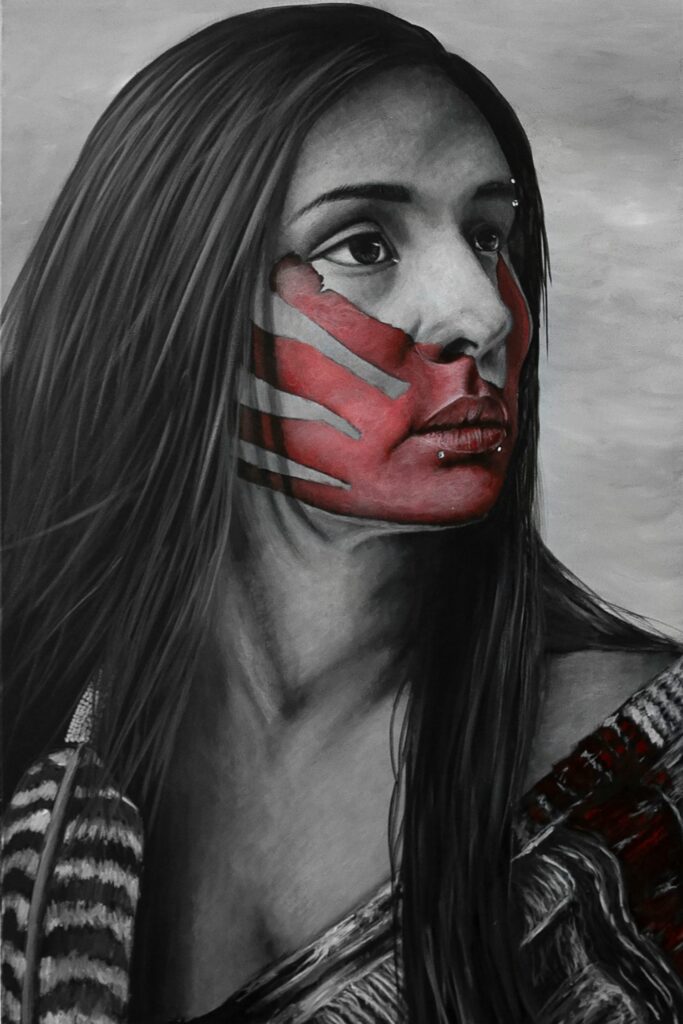
To put a point on it: The National Crime Information Center reports that “in 2016 there were 5,712 reports of missing American Indian and Alaska Native women and girls, though the U.S. Department of Justice’s federal missing person database, NamUs, only logged 116 cases.”
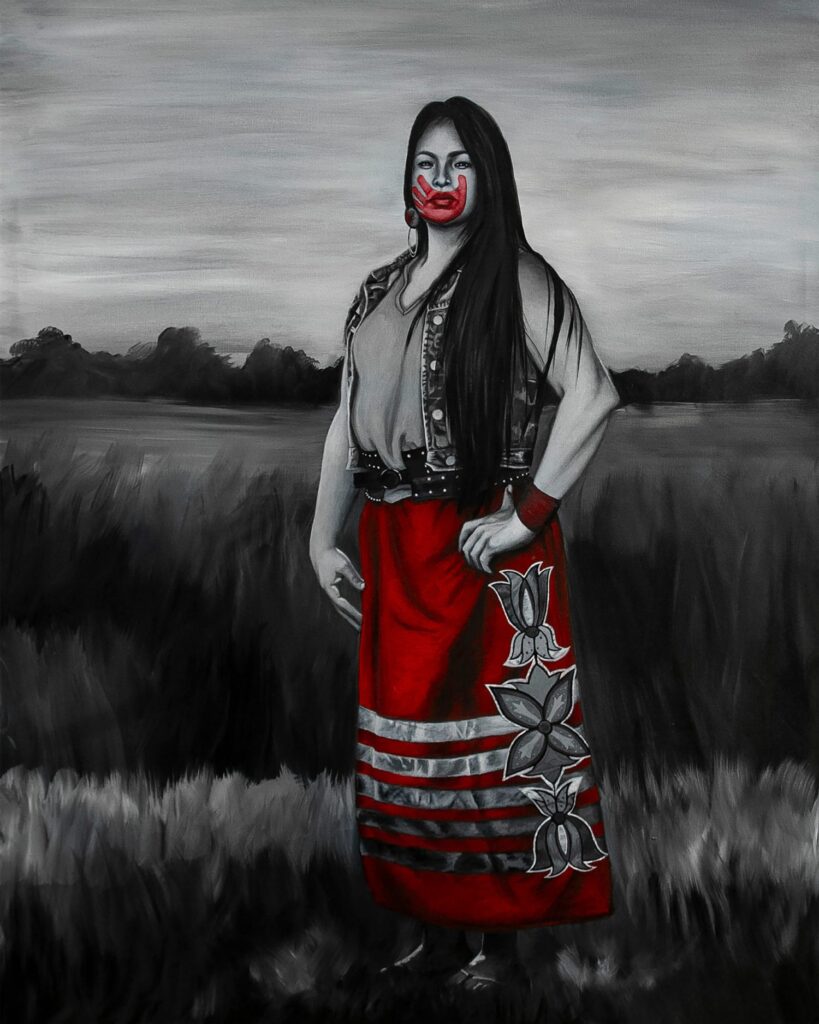
A red handprint painted over the mouth has become a growing symbol in the movement for justice for missing and murdered Indigenous women (MMIW), with protesters at actions often marking themselves with red paint in solidarity with the thousands of people whose stories rarely, if ever, make the news, let alone become Amber Alerts or full police investigations. This crisis became the source material for Métis Nation of Ontario painter Nayana LaFond’s ongoing series Portraits in RED, where she creates striking portraits of Indigenous people.
“[This project] was never intended to be a project at all,” LaFond says. What was initially meant to just be one painting in support of MMIW (“Lauraina in RED”) became a second (“Natahne & Yana”). Then: “The response to the second painting was even more [overwhelming] than the first, and so at that time I opened my email and messenger to anyone wanting me to paint them or their loved one for free. I did not anticipate the response I would receive, though. Over 25 messages with stories and images in the first day. It was then that I knew I had to paint them all.”
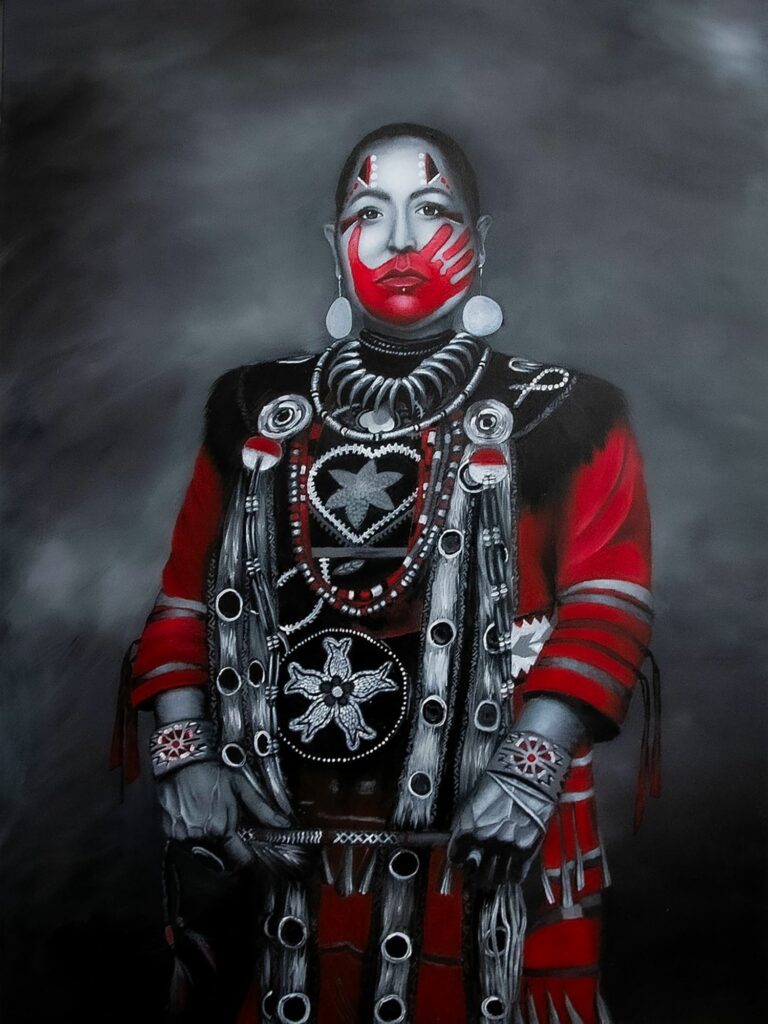
Since May 2020, LaFond has completed 110 portraits and showcased her work in exhibitions across the country, including eight scheduled so far this year. We are thrilled to honor a few of LaFond’s subjects here. While many memorialize missing and murdered women, some of LaFond’s work, such as “Kimberly in RED” (below, which illustrates an Ojibwe MMIW activist and motorcycle racer), offers reverent depictions of those who are alive and thriving, joining the chorus of voices decrying #NoMoreStolenSisters.
Your support matters…Independent journalism is under threat and overshadowed by heavily funded mainstream media.
You can help level the playing field. Become a member.
Your tax-deductible contribution keeps us digging beneath the headlines to give you thought-provoking, investigative reporting and analysis that unearths what's really happening- without compromise.
Give today to support our courageous, independent journalists.






You need to be a supporter to comment.
There are currently no responses to this article.
Be the first to respond.